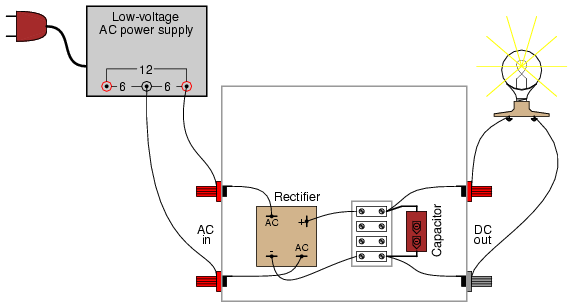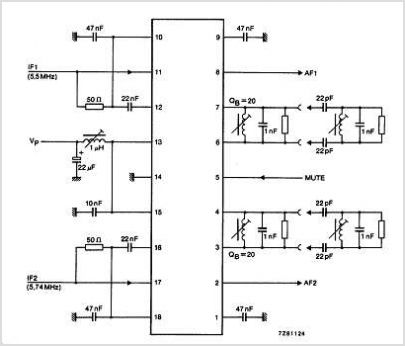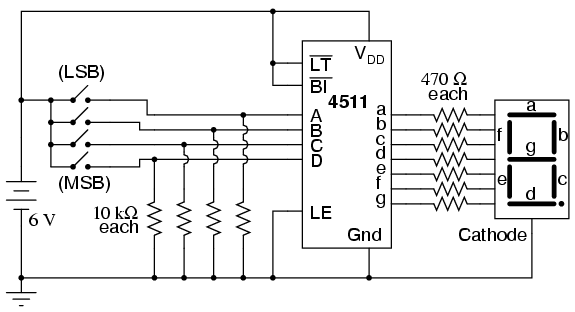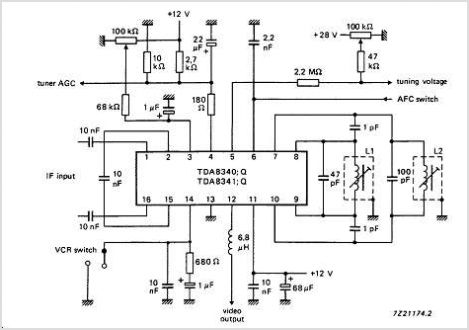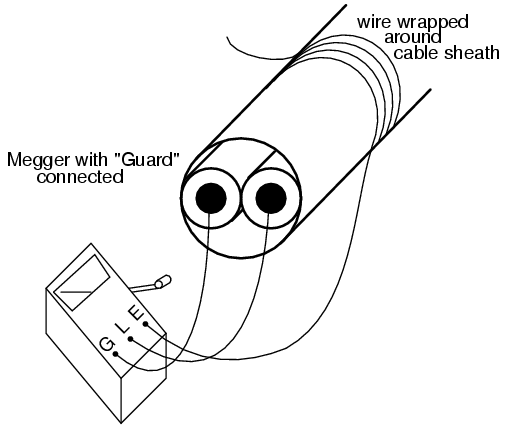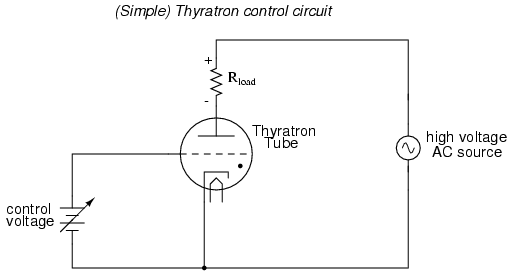
Lessons In Semiconductors
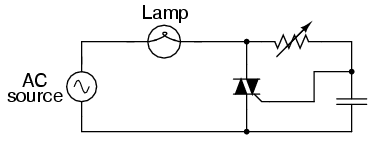
Thyristors are a class of semiconductor components that exhibit hysteresis, which is the property whereby a system does not return to its original state after the cause of the state change has been removed. A simple example of hysteresis is the mechanical action of a toggle switch: when the lever is pushed, it flips to one of two extreme states and remains there even after the source of motion is removed. In contrast, a momentary pushbutton switch returns to its original state after the button is released, demonstrating no latching behavior. Bipolar, junction field-effect, and insulated gate field-effect transistors are non-hysteretic devices, meaning they do not inherently latch into a state after being stimulated. For any given input signal, a transistor exhibits a predictable output response as defined by its characteristic curve. Thyristors, however, stay "on" once turned on and "off" once turned off. They can be toggled into either state by a momentary event and will remain in that state independently of the stimulus. Therefore, thyristors are useful as on/off switching devices, similar to toggle switches, but cannot function as analog signal amplifiers. Thyristors are constructed using the same technology as bipolar junction transistors and can be analyzed as circuits consisting of transistor pairs. The mechanism that enables hysteresis in thyristors, which are derived from non-hysteretic transistors, is positive feedback, also known as regenerative feedback. Feedback is the condition where a portion of the output signal is returned to the input of an amplifying device. Negative feedback diminishes voltage gain while enhancing stability, linearity, and bandwidth. In contrast, positive feedback induces a tendency for the amplifier's output to saturate. For thyristors, this saturation means they "want" to remain on once activated and off once deactivated. This discussion will explore various types of thyristors, most of which originate from a fundamental two-transistor core circuit. Before delving into this, it is beneficial to examine the technological predecessor to thyristors: gas discharge tubes. Observations of lightning storms illustrate electrical hysteresis, where strong wind and rain accumulate static electric charges, leading to high voltages that, when the resistance of air is overcome, result in lightning discharges. The accumulation of charge is a continuous process, but lightning itself occurs as brief surges rather than continuous discharges due to the nonlinear and hysteretic resistance of air.
Thyristors are essential components in power electronics, functioning primarily as switches in various applications, including motor control, lighting systems, and power conversion. Their ability to maintain a state after being triggered makes them particularly advantageous in applications requiring reliable on/off control without continuous input signals. The construction of thyristors typically involves four layers of semiconductor material, forming a p-n-p-n structure. This arrangement allows for the control of current flow through the device once it is triggered by a gate signal.
The operation of a thyristor can be understood through its characteristic I-V curve, which illustrates the relationship between the voltage across the device and the current flowing through it. The device remains in the "off" state until a sufficient gate current is applied, at which point it transitions into the "on" state and continues to conduct until the current drops below a certain threshold, known as the holding current. This behavior is crucial in applications where power needs to be controlled efficiently, as it minimizes energy loss during operation.
In practical circuits, thyristors can be employed in phase control applications, where they are used to regulate the power delivered to resistive loads, such as heaters and incandescent lamps. By adjusting the point in the AC cycle at which the thyristor is triggered, the effective power delivered to the load can be controlled, allowing for smooth dimming and temperature control.
Moreover, thyristors can be used in conjunction with other semiconductor devices, such as diodes and transistors, to create more complex circuits, including phase-locked loops and snubber circuits, which enhance their performance and reliability. Understanding the characteristics and behavior of thyristors is fundamental for engineers working in the field of power electronics, as they play a crucial role in modern electrical systems.Thyristors are a class of semiconductor components exhibiting hysteresis, that property whereby a system fails to return to its original state after some cause of state change has been removed. A very simple example of hysteresis is the mechanical action of a toggle switch: when the lever is pushed, it flips to one of two extreme states (positions)
and will remain there even after the source of motion is removed (after you remove your hand from the switch lever). To illustrate the absence of hysteresis, consider the action of a "momentary" pushbutton switch, which returns to its original state after the button is no longer pressed: when the stimulus is removed (your hand), the system (switch) immediately and fully returns to its prior state with no "latching" behavior.
Bipolar, junction field-effect, and insulated gate field-effect transistors are all non-hysteretic devices. That is, they do not inherently "latch" into a state after being stimulated by a voltage or current signal.
For any given input signal at any given time, a transistor will exhibit a predictable output response as defined by its characteristic curve. Thyristors, on the other hand, are semiconductor devices that tend to stay "on" once turned on, and tend to stay "off" once turned off.
A momentary event is able to flip these devices into either their on or off states where they will remain that way on their own, even after the cause of the state change is taken away. As such, they are useful only as on/off switching devices - much like a toggle switch - and cannot be used as analog signal amplifiers.
Thyristors are constructed using the same technology as bipolar junction transistors, and in fact may be analyzed as circuits comprised of transistor pairs. How then, can a hysteretic device (a thyristor) be made from non-hysteretic devices (transistors) The answer to this question is positive feedback, also known as regenerative feedback.
As you should recall, feedback is the condition where a percentage of the output signal is "fed back" to the input of an amplifying device. Negative, or degenerative, feedback results in a diminishing of voltage gain with increases in stability, linearity, and bandwidth.
Positive feedback, on the other hand, results in a kind of instability where the amplifier`s output tends to "saturate. " In the case of thyristors, this saturating tendency equates to the device "wanting" to stay on once turned on, and off once turned off.
In this chapter we will explore several different kinds of thyristors, most of which stem from a single, basic two-transistor core circuit. Before we do that, though, it would be beneficial to study the technological predecessor to thyristors: gas discharge tubes.
If you`ve ever witnessed a lightning storm, you`ve seen electrical hysteresis in action (and probably didn`t realize what you were seeing). The action of strong wind and rain accumulates tremendous static electric charges between cloud and earth, and between clouds as well.
Electric charge imbalances manifest themselves as high voltages, and when the electrical resistance of air can no longer hold these high voltages at bay, huge surges of current travel between opposing poles of electrical charge which we call "lightning. " The buildup of high voltages by wind and rain is a fairly continuous process, the rate of charge accumulation increasing under the proper atmospheric conditions.
However, lightning bolts are anything but continuous: they exist as relatively brief surges rather than continuous discharges. Why is this Why don`t we see soft, glowing lightning arcs instead of violently brief lightning bolts The answer lies in the nonlinear (and hysteretic) resistance of air.
Under ordinary conditions, air has an extremely high amount of resistance. It is so high, in fact, that we typically treat its resistance as infinite and electrical conduction through the air as negligible. The pres 🔗 External reference
Thyristors are essential components in power electronics, functioning primarily as switches in various applications, including motor control, lighting systems, and power conversion. Their ability to maintain a state after being triggered makes them particularly advantageous in applications requiring reliable on/off control without continuous input signals. The construction of thyristors typically involves four layers of semiconductor material, forming a p-n-p-n structure. This arrangement allows for the control of current flow through the device once it is triggered by a gate signal.
The operation of a thyristor can be understood through its characteristic I-V curve, which illustrates the relationship between the voltage across the device and the current flowing through it. The device remains in the "off" state until a sufficient gate current is applied, at which point it transitions into the "on" state and continues to conduct until the current drops below a certain threshold, known as the holding current. This behavior is crucial in applications where power needs to be controlled efficiently, as it minimizes energy loss during operation.
In practical circuits, thyristors can be employed in phase control applications, where they are used to regulate the power delivered to resistive loads, such as heaters and incandescent lamps. By adjusting the point in the AC cycle at which the thyristor is triggered, the effective power delivered to the load can be controlled, allowing for smooth dimming and temperature control.
Moreover, thyristors can be used in conjunction with other semiconductor devices, such as diodes and transistors, to create more complex circuits, including phase-locked loops and snubber circuits, which enhance their performance and reliability. Understanding the characteristics and behavior of thyristors is fundamental for engineers working in the field of power electronics, as they play a crucial role in modern electrical systems.Thyristors are a class of semiconductor components exhibiting hysteresis, that property whereby a system fails to return to its original state after some cause of state change has been removed. A very simple example of hysteresis is the mechanical action of a toggle switch: when the lever is pushed, it flips to one of two extreme states (positions)
and will remain there even after the source of motion is removed (after you remove your hand from the switch lever). To illustrate the absence of hysteresis, consider the action of a "momentary" pushbutton switch, which returns to its original state after the button is no longer pressed: when the stimulus is removed (your hand), the system (switch) immediately and fully returns to its prior state with no "latching" behavior.
Bipolar, junction field-effect, and insulated gate field-effect transistors are all non-hysteretic devices. That is, they do not inherently "latch" into a state after being stimulated by a voltage or current signal.
For any given input signal at any given time, a transistor will exhibit a predictable output response as defined by its characteristic curve. Thyristors, on the other hand, are semiconductor devices that tend to stay "on" once turned on, and tend to stay "off" once turned off.
A momentary event is able to flip these devices into either their on or off states where they will remain that way on their own, even after the cause of the state change is taken away. As such, they are useful only as on/off switching devices - much like a toggle switch - and cannot be used as analog signal amplifiers.
Thyristors are constructed using the same technology as bipolar junction transistors, and in fact may be analyzed as circuits comprised of transistor pairs. How then, can a hysteretic device (a thyristor) be made from non-hysteretic devices (transistors) The answer to this question is positive feedback, also known as regenerative feedback.
As you should recall, feedback is the condition where a percentage of the output signal is "fed back" to the input of an amplifying device. Negative, or degenerative, feedback results in a diminishing of voltage gain with increases in stability, linearity, and bandwidth.
Positive feedback, on the other hand, results in a kind of instability where the amplifier`s output tends to "saturate. " In the case of thyristors, this saturating tendency equates to the device "wanting" to stay on once turned on, and off once turned off.
In this chapter we will explore several different kinds of thyristors, most of which stem from a single, basic two-transistor core circuit. Before we do that, though, it would be beneficial to study the technological predecessor to thyristors: gas discharge tubes.
If you`ve ever witnessed a lightning storm, you`ve seen electrical hysteresis in action (and probably didn`t realize what you were seeing). The action of strong wind and rain accumulates tremendous static electric charges between cloud and earth, and between clouds as well.
Electric charge imbalances manifest themselves as high voltages, and when the electrical resistance of air can no longer hold these high voltages at bay, huge surges of current travel between opposing poles of electrical charge which we call "lightning. " The buildup of high voltages by wind and rain is a fairly continuous process, the rate of charge accumulation increasing under the proper atmospheric conditions.
However, lightning bolts are anything but continuous: they exist as relatively brief surges rather than continuous discharges. Why is this Why don`t we see soft, glowing lightning arcs instead of violently brief lightning bolts The answer lies in the nonlinear (and hysteretic) resistance of air.
Under ordinary conditions, air has an extremely high amount of resistance. It is so high, in fact, that we typically treat its resistance as infinite and electrical conduction through the air as negligible. The pres 🔗 External reference
